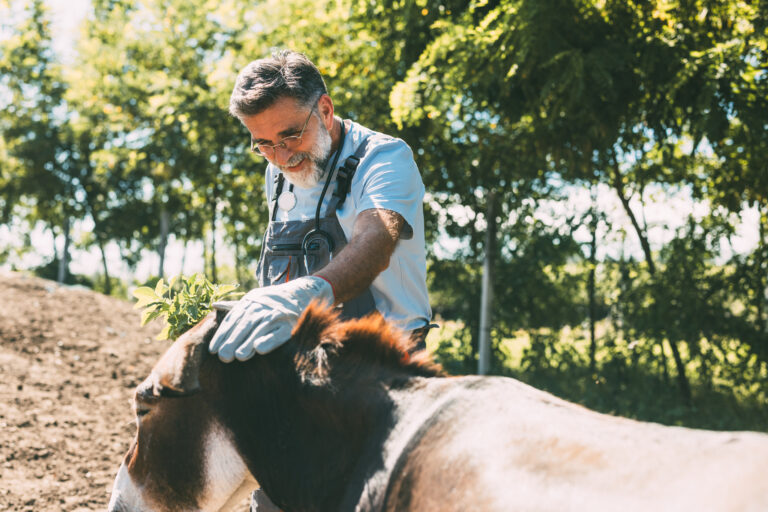
Danika Dostal, the Executive Director of the Equine Purchasing and Inventory Company (EPIC) and Inventory Manager at VMI, spoke at the 2022 AAEP Annual Convention, where she presented “Taking Control of Cost of Goods Sold with Focused Inventory Management.”
As Dostal began, she said, “Inventory can be a beast!” Over the next hour, she shared ways to tame the beast. Learning how to handle this difficult part of practice is important because poorly managed inventory can significantly affect profitability. Most veterinarians want to do better with managing inventory, but they just don’t know where to start, she said. Managing inventory well requires a great deal of dedication. In addition, although most practice owners are focused on paying less for drugs and supplies, she warned that this will be difficult because distributors no longer have much margin to work with.
Goals for Veterinary Inventory Management
It is important to recognize what your goals are for inventory management so you can set metrics to judge your practice’s progress, the speaker stated. These benchmarks could be Cost of Goods Sold (COGS) as a percentage of gross revenue, days of inventory in stock, mark-ups, shrinkage and discounts given. You should also understand your purchasing agreements and the number of rebates you expect to receive for your purchases. She acknowledged that this can be difficult to do. For maximum improvement, you must scrutinize both the revenue and expense sides of inventory, she emphasized.
Practice owners must purchase inventory and then manage it once it arrives, Dostal continued. Negotiations to determine a price occur before the purchases are made. Both negotiations and ordering require time, which has an additional cost because staff must be paid, she shared. Data entry and record keeping are important parts of inventory management as well.
“I haven’t found an inventory software system that does everything I need it to do, and does it well,” she stated. Counting, tracking, and calculating turnover will allow you to set min and max points based on your practice’s unique needs. Having a consistent sales plan for markups and computer software that can administer your sales plan will assist your effort.
Improving the Inventory Buying Process
Understand Purchasing Agreements
To buy better, Dostal suggested having a clear understanding of the various purchase agreements that the practice has with suppliers. These agreements will differ for laboratory services, manufacturers, and distributors. With distributors, some items have prices that are set by the manufacturers, while other items are sold for cost plus a percentage, she said. In addition, rebates are offered for purchasing an agreed-upon amount of product. However, the speaker warned that some products are not eligible for rebates or are subject to a different level of rebate. Therefore, understanding the details is essential. Negotiating to reduce the percentage above cost, and increase the rebates available, can help to improve the COGS expense.
Seek Better Terms for Payables
Another way to improve the buying process is by seeking better terms for payables to improve cash flow. You can also utilize the Vetcove service, which compiles suppliers’ offerings and streamlines ordering, the speaker shared. She cautioned against software that integrates with a distributor’s website, as the tendency is for all ordering to default to that vendor, which has the potential to increase costs.
Veterinary Inventory Tracking
To control purchased inventory, Dostal recommended procedures for tracking inventory that place a value on wastage, expired medications and missed billing. However, she admitted that measuring missed billing can be difficult. To track inventory correctly, each physical location where inventory goes must be mirrored in inventory software, she cautioned.
“The goal is for 100% of inventory movement to be recorded as purchases, transfers, sales or adjustments,” she said. She recommended a system of primary and secondary locations, with the central pharmacy serving as the primary location. Inventory then moves into the primary location as a purchase, and out of it as a transfer. Inventory transfers to a secondary location and leaves it as a sale. She recommended that secondary locations be doctors rather than trucks or rooms to provide higher accountability. In addition, access to the primary pharmacy must be strictly limited, she opined.
Final Thoughts
In conclusion, the speaker said that starting with simple steps, keeping your efforts manageable and building a culture that understands the importance of veterinary inventory will help you on your way to success.
Disclaimer from sponsor: This content is subject to change without notice and offered for informational use only. You should consult with your individual business, financial, legal, tax and/or other medical providers with respect to any information presented. Synchrony and any of its affiliates, including CareCredit, (collectively, “Synchrony”) makes no representations or warranties regarding this content and accept no liability for any loss or harm arising from the use of the information provided. All statements and opinions in the article are the sole opinions of the author. Your receipt of this material constitutes your acceptance of these terms and conditions.




